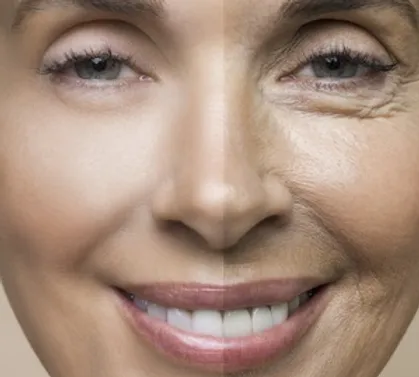Various factors influence skin ageing in the face.
Our genetics determine our natural and chronological ageing. Our genes we cannot influence but other factors we can. Various environmental factors like sun exposure increases and accelerates the ageing process, causing what is known as “photoaging”. Other environmental factors, such as smoking, diet and stress, also exacerbate the signs of ageing.
As we age, all skin layers will show signs of ageing.
In the epidermis photoaging is exhibited by a loss of radiance of the skin’s complexion, the appearance of brown and red spots, dilated pores and coarser skin. The areas most affected are those most exposed to the sun rays (the face, the décolletage and hands). Precancerous lesions (actinic keratoses) appear on skin that has been thus damaged, and therefore there is a greater risk of developing skin cancer.
In the dermis all the components (collagen, elastin and hyaluronic acid) gradually diminish both in quantity and quality leading to lack of hydration, thinning of the skin, loss of strength and elasticity, and wrinkles formation.
Area’s of repetitive facial muscle movements show the first wrinkles. These include the vertical lines between our eyebrows, the wrinkles on our foreheads and crow’s feet – that is to say our expression lines or dynamic wrinkles. Static wrinkles, which are not connected with muscular movement and are deeper, appear later on.
Next to the loss of skin strength and elasticity, also the loss of skin support contributes to the signs of ageing.
The subcutaneous fat compartments in the face, that contribute to a youthful appearance change with ageing, they diminish in size and slide downward due to gravity. More deeply, the bone support of the face diminishes. This bone atrophy combined with the melting of the fat compartments, contributes to the phenomenon of loss of skin support.
The face then loses its curves and outline, its oval and the skin sogginess is accentuated.
